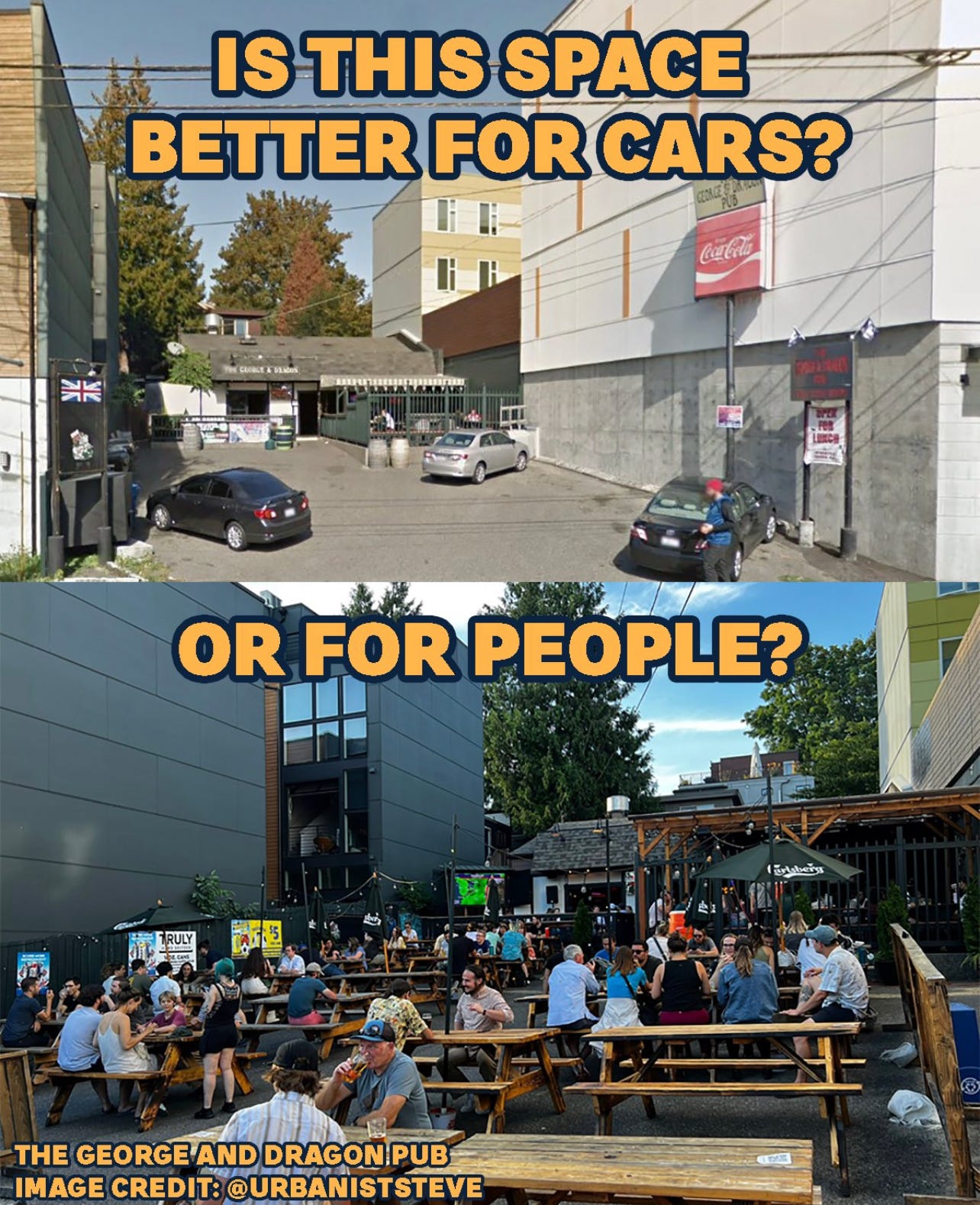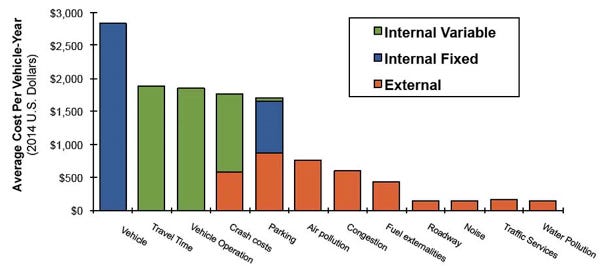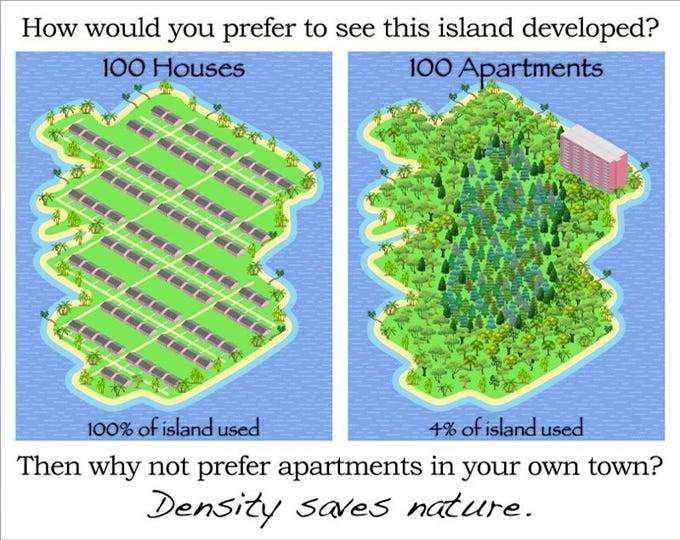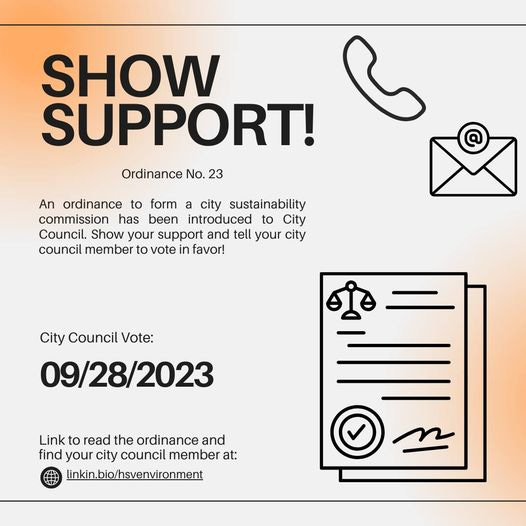Below is my op-ed upon which I based this week’s episode of the Housing for Huntsvillians Podcast!
***
On September 28th the Huntsville City Council will vote on whether to create (correct link: https://huntsvilleal.legistar.com/View.ashx?M=F&ID=12289869&GUID=B573AE04-2B99-477F-B90F-90E8EA98A7BC) a Huntsville Sustainability Commission.
The commission would help guide the city through implementing recommendations in 2010’s Green 13 Report, which the Huntsville Environmental Sustainability Committee (HESC) updated in April of this year.
There’s really just one thing this new commission, if formed, really must do to make Huntsville a significantly greener place to live. And that is to remove the barriers that make it more difficult and expensive for developers to build dense, naturally affordable housing near jobs, retail, services, and transit.
As the vote nears, I want to very briefly explain why I believe this. And I want to ask you to help me ensure that any such commission understands it as well.
The density difference
Some cities sprawl. In these cities, most residents live in subdivisions filled with single-family homes, each with their own large lawn. People living in these neighborhoods usually can’t access their jobs, parks, and grocery stores without driving.
Other cities are more dense. In these cities, many residents live in more affordable and more environmentally friendly types of homes. These often include apartments, condos, townhomes, tiny homes, ADUs, modular homes, and SROs. Because these types of homes take up less land than single-family homes, dense cities are more walkable and easier to get around via walking, bicycling, and transit.
Three reasons density matters for sustainability
Density is far more sustainable than sprawl. Researchers from the London School of Economics to Nature have known this for decades.
Below, I want to briefly cover the three main ways density protects the environment.
1. Density reduces driving
Transportation is the number-one contributor to greenhouse gas emissions in the US.
In 2017, our cars, trucks, SUVs, and vans accounted for one-fifth of our total emissions. We could get the same carbon dioxide reduction as shutting down 28 coal-fired power plants by driving just 10% less each year. Taking transit reduces CO2 emissions by 45% over driving alone. Walking or riding a bicycle, ebike, or scooter is even better.
Sprawl effectively forces people to drive more often and for longer distances.
People living densely have shorter commutes and do less driving overall. They emit less greenhouse gasses and create less battery waste and other pollution associated with EVs.
But when it comes to the environmental impacts of driving, carbon dioxide is just the tip of the melting iceberg. Every aspect of creating, owning, operating, maintaining, parking, and disposing of cars is environmentally destructive.
Building sprawling, car-dependent suburbs and then slapping some paint on a few sections of roadway will never actually meaningfully increase Huntsvillians’ transportation alternatives. In reality, our planners must choose whether to build their cities around humans or continue to build them around cars.
As long as we keep building homes far away from the places people need to go and without any way to safely travel there by foot, bicycle, bus, ebike, or scooter we will never, ever meaningfully reduce how much people drive or how much they degrade the environment by doing so.
Not only does it just make sense that people who live closer to where they need to go drive less often and for shorter distances, but studies also back it up.
2. Density requires less land than sprawl
Density is one of the most effective ways a city could possibly protect natural resources.
Simply put, when you build up you don’t have to build out. Building densely allows Huntsville to keep more of our natural land undeveloped.
Sprawl requires a lot more land per-family than density. Sprawling development destroys the large, connected natural wildlife habitats many endangered and threatened species depend on for survival. Sprawl also causes polluting natural disasters like the California wildfires.
Density also allows cities to sacrifice less land to cars and to pour less asphalt, which itself is horrible for the environment.
3. Dense homes are naturally greener
The research could not be more clear: Green homes are dense homes.
Income is the strongest predictor of high energy usage and carbon emissions per-capita. But, holding income and other factors steady, people who live in dense cities use less energy and produce significantly fewer carbon emissions per capita than suburb-dwellers. Dense homes tend to be smaller, so they require fewer building materials per family and require less energy to heat and cool than larger homes. Heating and cooling alone account for 43% of the average home’s energy use.
If Huntsville builds more apartments, condos, townhomes, ADUs, SROs, etc. in and around our urban core and employment centers, without doing anything else, we will drastically decrease our per-capita energy usage and carbon emissions.
Not only that, but building densely will also reduce per-capita pollution of other kinds. For example, density allows more families to live within walking distance of parks rather than forcing parents to drive or kids to play alone in sprawling lawns, which are demonstrably absolutely terrible for the environment.
The density battle
Not only is density better for the environment, but it’s also more economical. Sprawl costs the US economy more than $1 trillion annually.
When you find a solution that benefits both the environment and the economy, you should probably implement it. So why is Huntsville so spread out?
It wasn’t always this way. In the 19th century, Huntsville was a dense city, well-connected by streetcars. It wasn’t until 1963 that the City banned dense, naturally affordable housing in more than 85% of Huntsville through an exclusionary zoning ordinance. Such ordinances have a disturbing history and an uncertain future as cities across the country begin to recognize the economic, environmental, and social wreckage of these laws.
The sustainability solution
The ordinance for the new commission doesn’t specify how many people will sit on the commission, who will select them, or who’s eligible to serve. If this ordinance passes, what’s essential is that everyone on this commission understands what research from top institutions shows is the highest leverage thing the City and the new commission could do to make Huntsville greener.
The Huntsville Environmental Coalition is asking people on Facebook and Instagram to contact their city council member to encourage them to vote yes on September 28th. If you do, please also encourage them to do whatever is in their power to legalize dense, naturally affordable housing throughout our city.












So well explained. Many professional urban planners could not have presented this information as clearly as you have. I know you wrote this for Huntsville, but I wonder if I might borrow some of this for California?